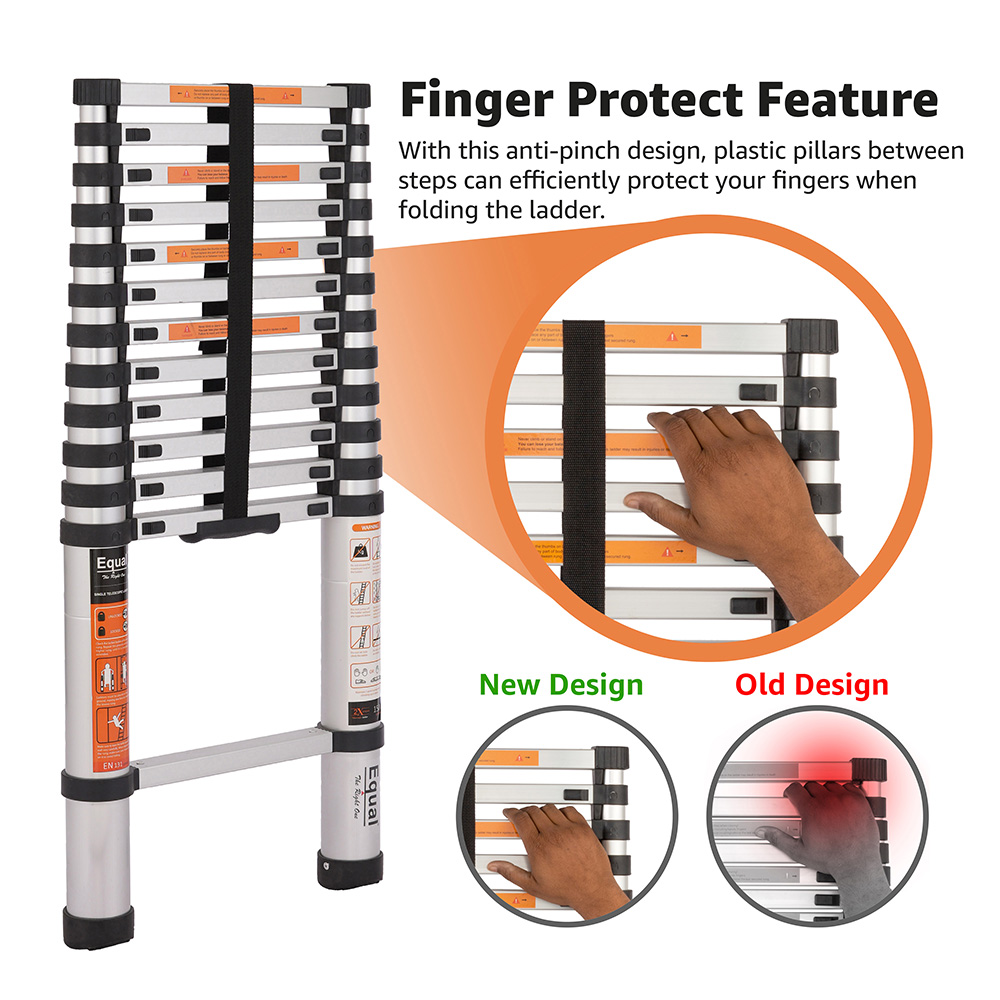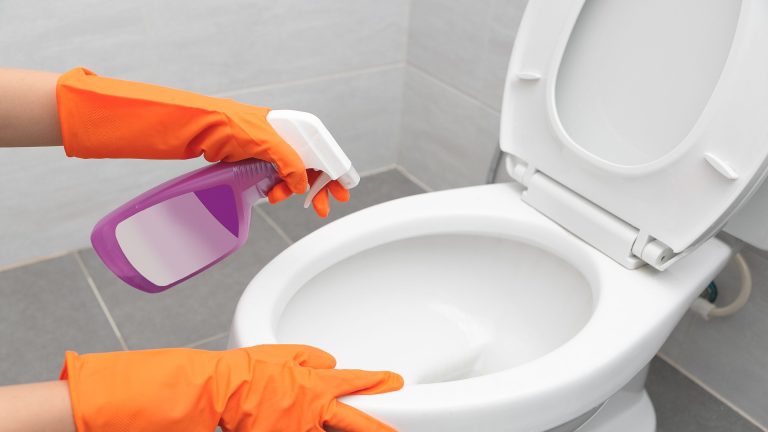How to Collapse a Telescopic Ladder?

To collapse a telescopic ladder, engage its locking mechanisms and gently slide each section down consecutively. Ensure you press the release buttons or levers provided before compressing the ladder to avoid injury.
Telescopic ladders are an essential tool for many DIY enthusiasts and professionals, combining convenience with functionality. Their collapsible design makes them a space-saving solution, perfect for storage in small areas or transport in a vehicle. As safety is paramount when handling any equipment, understanding the correct method to collapse a telescopic ladder is crucial.
A common mistake can lead to pinched fingers or worse, so it’s important to follow the manufacturer’s instructions diligently. Read the user manual carefully to identify specific features of your ladder model, as mechanisms might slightly vary. With the right technique, you can smoothly and safely reduce your ladder to its compact form, ready for the next use. Ensuring you know how to collapse your telescopic ladder correctly not only prolongs its lifespan but also safeguards your well-being during its operation.
Safety First
Safety always comes first when collapsing a telescopic ladder. It’s crucial to take precautions to prevent accidents and ensure your wellbeing. Implementing simple yet effective safety measures can extend the life of your ladder and protect you from potential hazards.
Inspect Before Folding
Proper inspection of your telescopic ladder is non-negotiable. Begin by examining each rung for any signs of damage or wear. Look for cracks, bends, or any form of deformation. Ensure the ladder is clean and free from slippery substances.
Confirm that all locking mechanisms are fully engaged before attempting to collapse the ladder. This ensures the ladder doesn’t start folding unexpectedly. Also check for any loose components that might compromise the ladder’s integrity.
Proper Personal Protective Equipment
- Gloves: Wear gloves to protect your hands from pinch points during the collapsing process.
- Shoes: Ensure you have shoes with a firm grip to maintain stability when you’re operating the ladder.
- Protective Eyewear: Use safety glasses to shield your eyes from potential debris or dust.
- Hard Hat: Consider a hard hat if working in an area with risks of falling objects.
Never rush the process of collapsing your ladder. Steady, controlled movements reduce the risk of accidental retraction or collapse, safeguarding against injury.
Always follow the manufacturer’s guidelines and consult the instruction manual for specific safety procedures related to your ladder model.
Preparation Steps
Welcome to the essential preparation steps for collapsing a telescopic ladder safely and efficiently. Before you approach your ladder, take a moment to ensure the surrounding environment is conducive to a smooth and accident-free process. Follow these guidelines to prevent damage to your ladder and ensure your personal safety.
Choosing The Right Surface
Always position your telescopic ladder on a stable, even surface. A solid ground prevents the ladder from slipping or tipping over during the collapse process. Look for these characteristics in the ideal surface:
- Flat: Avoid slopes or uneven terrain.
- Sturdy: Soft ground might give way under pressure.
- Non-slip: Wet or polished surfaces could cause slippage.
Remember: Check beneath the ladder for small objects or irregularities.
Clearing The Surrounding Area
Ensure the area around your ladder is free from obstacles. You need ample space to retract the ladder without hitting anything. Perform these actions:
| Action | Purpose |
|---|---|
| Remove nearby tools | Prevents equipment damage |
| Keep people away | Avoids injury to others |
| Check for overhead hazards | Reduces risk of collision |
A clear zone ensures your safety and the ladder’s integrity once you begin the collapse process.
Understanding The Mechanism
Understanding the mechanism behind collapsing a telescopic ladder is key to using it safely and efficiently. These ladders provide convenience and portability, but they must be handled correctly. Let’s explore the two fundamental components that make this possible: the locking and release system and the telescopic mechanism itself.
Locking And Release System
A telescopic ladder’s locking and release system is integral to its function. The system allows each rung to lock securely in place when the ladder is extended. Conversely, when collapsing the ladder, you must engage the release mechanism. This action typically involves pushing, pulling, or twisting a button or lever located on each rung or section of the ladder.
- Identify the release buttons on either side of the rungs.
- Press or slide these buttons simultaneously.
- Ensure all fingers are clear to avoid pinching.
- Control the collapse to prevent damage.
Telescopic Mechanism Fundamentals
The telescopic mechanism is what allows the ladder to extend and retract smoothly. This mechanism consists of nested tubular sections that slide into each other. Each section has its own locking mechanism that must disengage prior to collapsing the ladder.
| Part | Function |
|---|---|
| Rungs | Lock in place to maintain desired height. |
| Inner Tube | Slides into the outer tube. |
| Outer Tube | Houses the inner tube and locking mechanism. |
| Locking Pins | Secure the rungs when extended. |
| Release Buttons | Engaged to collapse the ladder. |
By mastering these components, you can collapse a telescopic ladder effortlessly and maintain its longevity. Remember to handle the mechanism with care and perform regular maintenance checks for its smooth operation.

Credit: www.amazon.com
Collapsing The Ladder Step By Step
So, you’ve finished your tasks and it’s time to pack away your ladder. But, how do you do this safely and efficiently? Follow these simple steps to collapse a telescopic ladder with ease!
Engaging The Release Buttons
Begin by locating the release buttons on your ladder. These are typically found at the end or underside of each rung. Make sure your fingers are not directly over the buttons, to avoid pinching. Press them simultaneously to unlock the section.
Gently Lowering Each Section
After unlocking, lower each section slowly. Control is key to prevent it from sliding down too fast. Use one hand to support the section as it lowers. Move to the next when it clicks into place.
Double Checking Each Step
It’s crucial to double-check each step. Ensure each section is fully collapsed and locked. Take your time and go section by section until fully retracted. Your safety is the priority, so a quick review is worth the effort!
- Locate release buttons
- Press without placing fingers over them
- Lower each section slowly and control the speed
- Ensure each section clicks and locks
- Review all steps once done
Common Mistakes To Avoid
Welcome to our practical guide on handling telescopic ladders with care! Proper technique matters, not just for your safety, but also to extend the life of your ladder. In this section, we’re focusing on the typical errors users often make during the collapse process.
Forcing Stuck Sections
When collapsing a telescopic ladder, rushing can lead to trouble. One common mistake is forcing sections that seem stuck. Pushing too hard can damage both the ladder and potentially cause injury. If a section won’t budge:
- Inspect the locking mechanisms. Make sure they’re fully retracted.
- Use a gentle, firm pressure. Apply enough to retract without straining.
- Seek help. If it still won’t collapse, don’t force it. Ask for assistance instead.
Remember, patience is key. Forcing can bend the rails or damage the locking pins.
Skipping Safety Checks
Before attempting to collapse your telescopic ladder, a safety check is crucial. Ignoring this can cause accidents. Always ensure:
- No debris is on the rungs or in the mechanisms.
- Hands and fingers are clear from the collapsing sections.
- Proper footwear is worn to prevent slips.
Never stand on the ladder while collapsing it.
Check the area around you to avoid striking objects or people as it retracts.

Credit: m.youtube.com
Maintenance Post-collapse
Once your telescopic ladder is neatly collapsed, it’s time to give it some TLC. Proper maintenance ensures your ladder remains sturdy and safe for every use. Dive into the steps to keep your ladder in top shape.
Cleaning The Ladder
Keep your ladder spotless and functional. Dirt and debris affect its performance. Follow these simple steps:
- Wipe down each rung with a damp cloth.
- Use a mild soap for stubborn grime.
- Dry thoroughly to prevent rust on metal parts.
- Avoid harsh chemicals that can damage the ladder.
Checking For Wear And Tear
Regular checks keep you safe. Ensure your ladder’s longevity with these tips:
- Inspect each joint and locking mechanism for wear.
- Look for bent or broken parts that need fixing.
- Test the smooth operation of the telescopic action.
- Replace parts as needed to maintain safety.
Proper Storage Solutions
Proper storage solutions for your telescopic ladder not only ensure safety but also prolong its lifespan. The key to effective storage is providing a spot that’s easily accessible yet clear from any obstructions. Correct ladder storage imparts a tidy look to your space and safeguards the ladder’s mechanism.
Selecting The Right Spot
The ideal location for storing a telescopic ladder is crucial. Always pick a clean, dry place. Avoid spots with extreme temperatures. It helps prevent rust and other damage. It’s best to keep your ladder indoors to shield it from weather wear and tear. Make sure the area is out of children’s reach for safety.
Below are the key factors to consider:
- Dryness: Moisture can damage the ladder.
- Temperature: Consistent climates are best.
- Access: Choose a convenient yet secure spot.
- Safety: Keep it away from kids and traffic.
Horizontal Vs Vertical Storage
| Storage Type | Pros | Cons |
|---|---|---|
| Horizontal |
|
|
| Vertical |
|
|
Whether you choose to store your ladder horizontally or vertically, ensure it’s always fully collapsed. Horizontal storage is often safer, while vertical storage saves space. Attach your ladder securely to avoid slipping. Use strong hooks for vertical storage and ensure the ladder doesn’t obstruct walkways.

Credit: www.amazon.com
Frequently Asked Questions On How To Collapse A Telescopic Ladder?
Is Collapsing A Telescopic Ladder Easy?
Yes, collapsing a telescopic ladder is generally straightforward. It involves depressing locks or buttons and lowering each section carefully. Always ensure you follow the manufacturer’s instructions to avoid accidents and to maintain the ladder’s integrity.
What Safety Precautions Should Be Taken?
Before collapsing the ladder, ensure it is clean and dry to prevent slipping. Wear gloves, keep your fingers away from the closing sections to avoid pinching, and retract the ladder slowly to control its movement.
Can You Collapse A Ladder Single-handedly?
It is possible to collapse a ladder with one hand, but it’s safer to use both hands. This ensures you have full control over the telescopic mechanism and can guide the sections to retract smoothly without sudden drops.
How Do You Maintain A Telescopic Ladder?
To maintain your ladder, keep it clean, lubricate the mechanisms as needed, and inspect for damage before use. Proper maintenance ensures easy collapsing and extends the ladder’s life.
Conclusion
Mastering the collapse of your telescopic ladder is key for both safety and convenience. Remember, proper technique ensures longevity of the ladder and prevents accidents. Stick to the manufacturer’s guidelines and practice the steps we’ve outlined. Your ladder should serve you well, making work at heights easier and safer.

